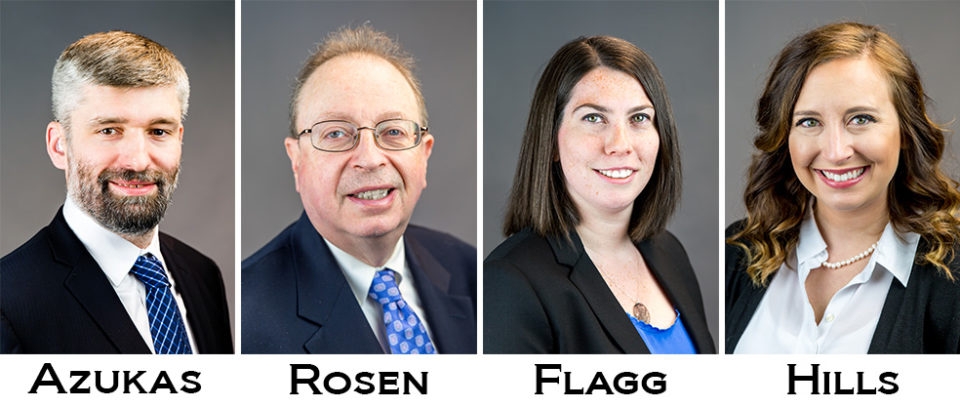March 13, 2018 - Sargent & Lundy is participating in the 2018 Electric Power Conference and Exhibition, taking place March 19 -22 in Nashville, Tennessee. The firm is presenting on a range of topics, from water management to selective catalytic reductions (SCRs), as well as providing technical expertise on sessions and panels. Our presenters, who invite you to say hello following their sessions, are more than willing to share their insights and discuss questions or concerns you may have regarding services, plants, or general engineering needs.

Application of Hazard & Operability (HAZOP) Analysis in Power Plant Design, presented by Daniel Azukas and co–authored by Jason Gerol and Ryan Krone, all of Sargent & Lundy. This paper presents the authors’ experience offering guidance to the power industry on the application of HAZOPs. The paper and presentation will identify the key reasons to perform HAZOPs for power generation facilities and will provide recommendations on best practices in an effort to promote the understanding of and further develop the practice of HAZOP analysis in the power industry.
Challenges and Lessons Learned to Complete a Fast Track Combined Cycle Project – Carty Unit 1, presented by Jaisen Mody of Portland General Electric Co. (PGE). This session discusses how PGE stepped in to complete the project, with Sargent & Lundy supporting their efforts as construction manager/balance of plant (BOP) engineer. Picking up the construction mid-stream, both organizations collaborated to bring the project to successful completion. Carty Unit 1 went on line in July 2016. The completion of the project represents the power industry at its best, with excellent BOP design and engineering support partnered with strong craft commitment to high-quality and performance in construction.
Water Management and Treatment Considerations for Cogeneration Projects, presented by Mike Rosen of Sargent & Lundy. This presentation is primarily intended as a high-level planning tool to assist utilities considering cogeneration projects to identify important water and waste treatment issues prior to financial closure. These issues include the need for treatment of condensate return with possible temperature reduction, which entity (utility or steam host) will be responsible for supply of demineralized water and optimal treatment method, and wastewater treatment and disposal options. Based on the author's experience, emphasis is also placed on the importance of obtaining good water quality data and identifying early in the project life whether chemicals proposed for the utility steam cycle will be compatible with the steam host metallurgy and processes. A detailed example will be presented illustrating how the Electric Power Research Institute’s guidelines can be applied to determine levels of heat recovery steam generator blowdown and the need for condensate treatment based on condensate return quality.
Salient Features of SNCR Installation at Laramie River: Approach and Lessons Learned, presented by Sargent & Lundy’s Danielle Flagg, along with co-authors Kevin Lauzze of Sargent & Lundy and Tylor Schilke of Basin Electric Power Cooperative (BEPC). Sargent & Lundy is currently helping BEPC install SCR and selective non-catalytic reduction (SNCR) technologies at the Laramie Rive Station. The presentation will focus on the approach for incorporating the SNCR project into the overall SCR project, specifically integrating the schedule and work packages with the SCR, identifying synergies between both projects and discussing lessons learned from the study and initial detailed design phases of the SNCR project.
Low Load Operation and Effects on SCR Catalyst and Scrubber Equipment, presented by Holly Hills of Sargent & Lundy, and co-authored by Scott Hiedeman of Kansas City Power and Light (KCP&L). This presentation discusses the engineer/procure/construct (EPC) air quality control system (AQCS) retrofit project at Units 1 and 2 of KCP&L’s La Cygne Station. The project included a SCR system on Unit 2 and activated carbon injection (ACI) systems, pulse jet fabric filters (PJFFs), and wet flue gas desulfurization (FGD) scrubbers on Units 1 and 2. The presentation will discuss lessons learned during the AQCS project and review low-load operation testing and heat rate improvements completed after the AQCS equipment installation, including the effects on the SCR catalyst and wet FGD scrubber equipment, in order to increase the units' load range flexibility and dispatching order.
See Sargent & Lundy at the Carbon Capture Utilization & Storage Conference
Article: Power Plant Construction and Upgrade Best Practices